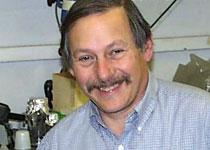
Dr. Jacobson's laboratory is interested in the physiological and hormonal factors that control the degradation of proteins in muscle. Abnormally rapid muscle protein degradation is associated with various disease states that lead to muscle wasting or muscle atrophy, including cancer, sepsis, AIDS, renal failure, diabetes and chronic inactivity. The nematode Caenorhabditis elegans is used as a model organism for these studies, because of the exceptional convenience of genetic manipulation and analysis and the overall cellular simplicity of the animal. Over the past few years, our work has shown that muscle protein degradation is regulated by diverse networked signal-transduction pathways that control several different proteolytic systems. This level of complexity was unanticipated and poses a variety of challenges to our understanding of how these crucial processes are regulated. Rather than proteolysis being triggered when a single signal is turned from "off" to "on", what is important is the balance between three or more sets of signals with opposing effects. We believe this makes sense from a physiological viewpoint, in that muscle must monitor a variety of physiological variables and enter the state of protein catabolism when "unfavorable" signals are too high or "favorable" signals are too low. However, elucidating the biochemical basis for integration of multiple signals remains a formidable challenge.
Current work in the lab focuses on how muscle homeostasis and protein degradation are regulated by (a) intramuscular calcium and multiple muscle calcium channels; (b) calcium-activated protein kinases; (c) protein phosphatases that modulate signaling. These efforts are greatly facilitated by our unique collection of over 350 mutant strains with altered signaling. In addition, we have two collaborative programs:
a) With N. Szewczyk (Univ. of Nottingham, UK), we are studying the roles of about 1000 genes in maintaining muscle homeostasis. The target genes include the entire genomic set of protein kinases and protein phosphatases, plus a set of genes where mutation produces known phenotypes in muscle.
b) With J. Faeder (Dept. of Computational and Systems Biology) we are undertaking quantitative mathematical modeling of the intricate network that regulates autophagy in muscle, including feedback loops.
The lab environment: The lab has long been known as "The Zoo" for its informal atmosphere and traditional dedication to Marxism (Groucho, not Karl). We are usually a diverse and age-heterogeneous group, ranging from beginning undergraduates to postdocs.
